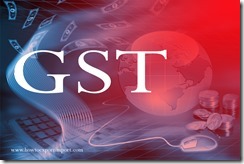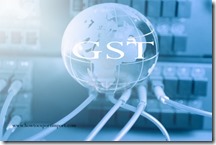Goods and Service Tax (GST), a simple tutorial part 1
Posted on
11 April 2023 Category : GST ST
GST registration guidelines
Indian GST Laws
How to export your goods?
Difference between IGST and SGST
Types of GST in India
Difference between CGST and IGST
GST on Imports in India
Difference between CGST and SGST
What is SGST in brief?
What is IGST in brief?
What is CGST in brief?
A very brief description about GST
How to export goods from India?
How to get Export Order?
Export benefit schemes in India
Export procedures and documentation
Know HTS code (HS code) of your product
How to import goods to India?
Find ITC code of your product
Export benefit schemes from Export Promotion Councils
Also Read
How to start Export Business?
How to get Export Orders?
What are the risks and solutions in Export Business?
How to overcome negative thinking in Exports Business?
How to send samples?How to prepare Export Invoice?
How to get certificate of origin?
How does letter of credit work?
What are the terms of Payment in Export Import Trade?
Terms of Delivery in International Business
Difference between standard dry container and Open Top Container
How to import Prepared vegetables, Prepared fruits, Prepared nuts
Guidelines to importers of Prepared Cereals, Prepared Flour, Prepared starch and Prepared Milk
FEMA declaration for exporters instead of SDF form
Export Promotion Councils and Commodity Boards, product wise
Apparel Export Promotio
How does a Running bond work?
How does Bill of Lading work in DP payment terms?
How does Bill of Lading work in Sight LC
Transferability of Bill of Lading
Transhipment - A redefinition
n Council
List of Export promotion councils and Commodity Boards
It is a destination based tax on consumption of goods and services. It is proposed to be levied at all stages right from manufacture up to final consumption with credit of taxes paid at previous stages available as setoff. In a nutshell, only value addition will be taxed and burden of tax is to be borne by the final consumer.
GST, frequently asked Questions
If you would like to get a brief explanation about GST, click here. Or if you would like to have a basic idea about GST, read below:
Goods and Service Tax (GST), a simple tutorial part 1
Goods and Service Tax (GST) part 1
In this post I am trying to explain about Goods and Service Tax (GST) in simple language to make you easily understand. Let us also discuss briefly about Sales Tax, Central Excise Tax, and Value Added Tax etc. The information about Goods and Service Tax (GST) in this website explains in two parts. You may read both parts to have a clear idea about GST.
What is GST? What is the concept of GST? How does GST work? How does GST differ from other taxes? What is the need of GST? What is the impact of GST in Indian economy?
As you know, present taxation system of India consists of mainly Direct Tax and Indirect Tax. Apart from direct and indirect tax, you might have heard other categories of taxes like Ad valorem Tax, Progressive and regressive tax etc.
What is direct tax?
Let me explain in simple language about direct tax. You may go deeply later with its complete understanding. For your immediate and easy understanding, let me explain about direct tax as below:
Direct tax is the tax whose liability cannot be shifted to someone else. For example, you work in a multinational company and drawing salary. On that salary, you have to pay tax to government, ie, Income Tax. You cannot shift this tax liability to someone else.
There are other taxes also like corporate tax, wealth tax, Minimum alternate Tax (MAT) etc.

What is indirect tax?
Indirect tax is the tax liability one can shift to someone else.
3 Important Indirect Taxes
What are the three important indirect taxes?
Three important indirect taxes are central excise tax, sales tax and service tax.
What is central excise Tax?
Central excise is the tax on production/manufacturer of goods. We can also call central excise tax as CENVAT.
What is Sales Tax?
Sales Tax is the tax on distribution of goods, also known as state level VAT.
How does Service Tax Work?
Service Tax is the tax on production and distribution of goods and many other indirect taxes.
What is VAT?
Let us discuss with an example for the purpose of understanding VAT initially and then GST.
Let me explain with an example about movement of goods and value addition with a very simple explanation. A shop keeper sells Cake. He gets cake from Baker. Baker makes cakes with flour which he buys from a Miller. Miller buys wheat from Farmer.
Again to make you easily understand on VAT and GST, I simplify the above example by mentioning 4 stages of examples. I hope, this will help you to understand about VAT and GST very easily. All examples for understanding purpose only. Let us split the above example as below:
Stage:1. The Farmer produces Wheat.
Wheat is produced by farmer. For the purpose of producing wheat, the farmer undertakes all farming process. He buys raw materials also. Ok, let us assume, the farmer buys inputs for Rs. 10.00. After completing all the process of farming the wheat is ready for sale to Miller to make flour. He sells wheat for Rs.30.00 by keeping a profit of Rs.20.00.
Stage:2. The wheat becomes flour by milling
The miller purchases wheat from farmer for Rs.30.00. He mills wheat and sells flour to Baker for Rs.50.00 with a margin of Rs.20.00 again.
Stage:3. The baker makes cakes with flour
The baker who bought flour for Rs.50.00 from miller makes cakes and sells for Rs.90.00. Here, he keeps a margin of Rs.40.00
Stage:4. The Shop keeper sells cakes
Finally, the shop keeper buys cakes from the baker for Rs.90.00 and sells for Rs.100.00 with a profit of Rs.10.00.
I hope, the above 4 stages of explanation are very simple to understand.

Now let us come back to VAT. What is Value Added Tax (VAT)?
Let us presume central excise tax or Sales tax rate is 10%. As you know, this tax is levied on the output. In the first stage, output is Rs.30.00. So, central excise/sales tax is Rs.3.00 (10% of Rs.30.00). In the second stage, Central excise/ sales tax rate at 10% works out to Rs.5.00 (10% of Rs.50.00 output). Rs.9.00 would be the central excise/ sales tax rate under 3rd stage of this example (10% on output of Rs.90.00) and in 4th stage, the shop keeper pays Rs.10.00 as central excise/sales tax as his output is Rs.100 (ie. 10% of Rs.100.00). And the total excise/sales tax becomes Rs.27.00, if you add all stages. So this is the tax liability in all these stages under the central excise/sales tax regime.
Do you notice a problem here? The problem is that on the input, ie, when the raw material at 1st stage is taxed, the output became Rs.30.00. Again the raw materials are taxed at the second stage, and again at 3rd stage and finally at 4thstage.
Here tax is imposed on tax paid. That means tax on tax. This is the present Central excise/Sales tax regime which carries a major problem and stupidity.
What happens here when tax on tax are imposed? Simple, the cost of production increases.
So the Central government realized this issue and decided to eliminate central excise and decided to replace central excise with Value Added Tax (VAT). In turn, the central government asked the state governments to replace sales tax with VAT (Value Added Tax). Click here to continue reading : What is Goods and Service Tax Part 2
This post explains about Goods and Service Tax (GST) in simple language. Would you like to add more information about GST to make people understand easily?
Share below your thoughts about Goods and Service Tax (GST).
Click here to know GST rate on Goods and Services
GST Exemption list of goods and services
Find HSN number or Service tariff code for G
Comments
|
|
|
|
|
|